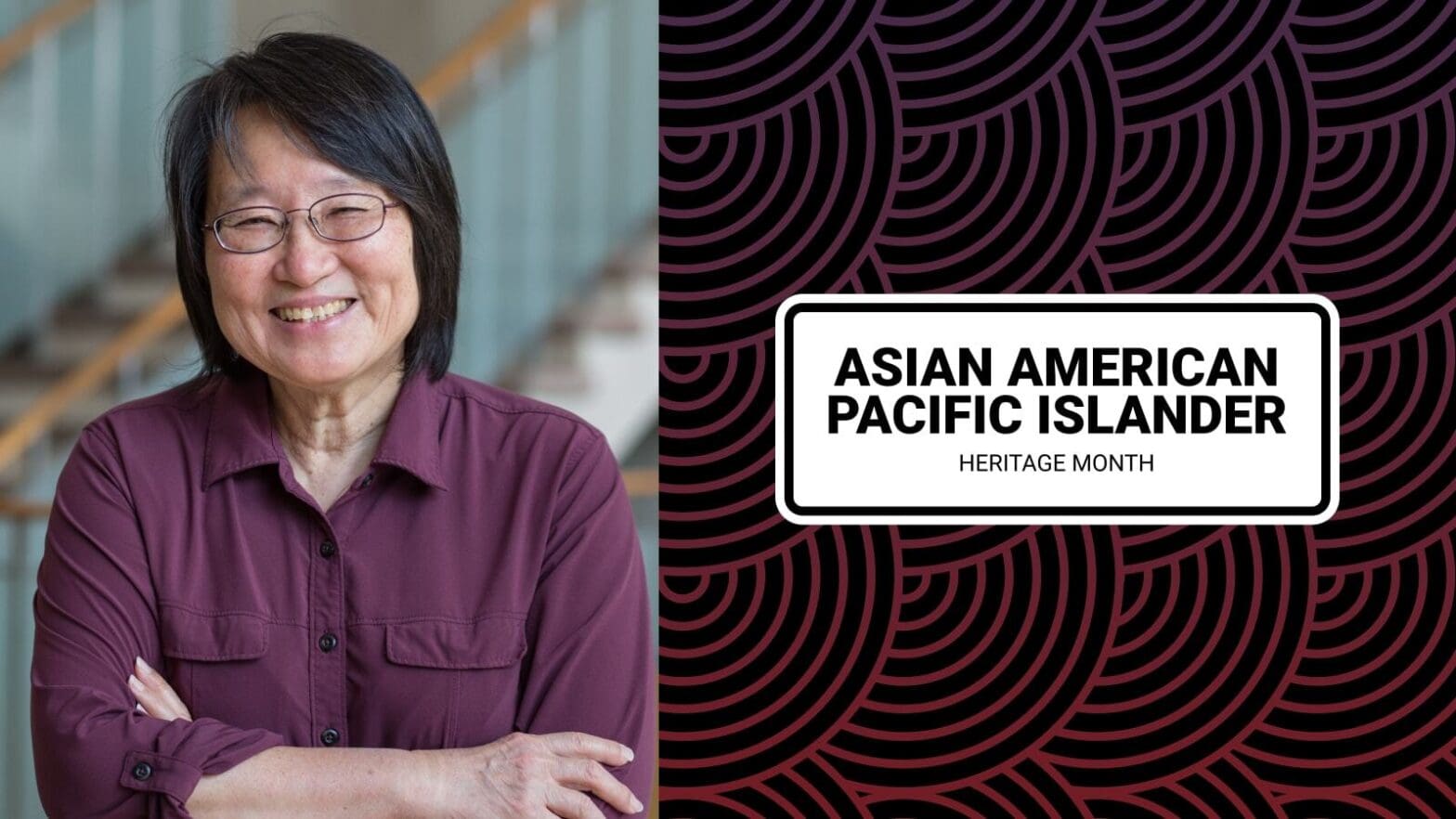
‘Awesome professor’ and ‘dream job’ in industry were pivotal for computer architect
By
on
This is from the series Asian American and Pacific Islander Heritage Month

Ruby Lee Tori Repp/Fotobuddy
Lee worked at Hewlett Packard for 17 years as a chief computer architect, leading the company and the broader industry through several revolutions of computer architecture. During the 1980s her work helped usher in the widespread use of highly simplified “instruction sets” for computer chips and then the integration of multimedia capabilities into the core components of computers. Lee went on to lead the company’s security architecture efforts, an area of work she continues to pioneer. The former HP executive who originally hired Lee later reflected that she is “one of the top instruction-set architects in the world.”
“Ruby has been there for two major revolutions in architecture. That’s quite unusual for a computer architect,” the executive, Joel Birnbaum, said in a 2002 interview.
In joining the Princeton faculty in 1998, Lee also broke new ground, becoming the first woman appointed to an endowed chair professor in the school of engineering, and the first Asian American woman to have tenure at Princeton.
Lee earned her bachelor’s degree at Cornell University and her doctorate at Stanford University. She has been widely recognized for her work including election to the American Academy of Arts and Sciences and as a fellow of the Association of Computing Machinery and the Institute of Electrical and Electronics Engineers.
In recognition of Asian American and Pacific Islander Heritage Month, Lee recently spoke about her academic path and the critical role of cybersecurity design for the future of society.
What was your path to joining the faculty at Princeton?
I went to excellent, British-style, schools growing up in Singapore. My parents were from Shanghai, but they left before the communists came to Shanghai, and I was born in Singapore. My favorite subjects were probably math and English literature. I thought math was a very beautiful language, and I was intrigued by what it could be used for.
I went to Cornell and actually was initially a pre-med. I did all my pre-med requirements in my freshmen year. Then I was elected into the Cornell Arts and Sciences College Scholar Program. This is a program where they relieve undergrads of all requirements except the total number of course units to graduate. So I designed a double independent major in computer science and comparative literature because I was interested in both the sciences and arts.
After one year of that, I was pretty sure that I liked computer science better. I was really fascinated by the ideas of computer science. So, I decided to graduate a year early and go for graduate school in computer science at Stanford instead. Then I met this awesome professor, Professor Michael Flynn, who was in computer architecture in the Electrical Engineering Department. He invited me to be his teaching assistant. It was baptism by fire — I was the TA for this advanced computer architecture class that I had never taken. I fell in love with computer architecture. He said, “Why don’t you just come to EE and do a Ph.D.?” I took the very scary Ph.D. qualifying exams, where you have 10 oral exams with 10 randomly selected EE professors, and fortunately passed on the first try.
When I graduated, I received a huge pile of personal invitations from departments of EE and computer science to apply for assistant professor positions. There were very few women Ph.D.s at the time. Stanford offered me an acting assistant professorship, and when I was halfway through that year, Hewlett-Packard asked me to come interview. They offered me a job the day I interviewed, and said it was fine even if it would be at least 6 months before I could start. They were starting a new program to design a new computer architecture for the whole company.
That was an amazing job because for a newly-minted Ph.D. in computer architecture to be offered a job that involved designing a new computer architecture for a major computer company that was going to unify its three computer product lines, it was a dream job. It is satisfying to know that our architecture has been in many generations of computers helping zillions of people around the world for a very long time.
After that, I just stayed on at HP because it was an excellent company. I got to do lots of different things. First, I designed a computer architecture for PA-RISC, which is Precision Architecture RISC Machines. Then, I did the implementation for it in the first CMOS microprocessor, a single chip processor. I helped design the microarchitecture of several innovative PA-RISC processors, and did lots of other projects including multimedia where I was a chief architect for multimedia for all sorts of online video, audio, and graphics. Then I was the chief architect for security and getting very interested in that.
Just around that time, Princeton invited me to come and give a seminar at the University. Our son was an undergrad here, so I was happy to come. Sometime during that visit, the EE department chair asked me if I would consider a career change from industry to academia. Initially, I was not sure as I had a great job at HP, but then I thought that this would be a way I could give back to society what I had learnt, by educating future generations. I feel very blessed to have had two such enjoyable careers: in industry at the height of the Silicon Valley boom, and in academia here at Princeton.
If there was something that you could clarify about people’s perceptions of Asians in STEM, what would it be?
Sometimes, it seems like Asian-Americans do not get as much credit as they deserve for what they have done. It may be because they are a bit shy, or not culturally inclined to self-promotion. We need to recognize and demystify the achievements of Asians.
If you were talking to a young person about your field right now, what would you say is exciting? What advice would you give?
My research now is at the intersection of three areas: cybersecurity, computer architecture, and deep learning or artificial intelligence. I think that this is a really exciting time for people to get into these areas. For example, with the escalation of cyberattacks, improving cybersecurity is critical for all aspects of our daily lives, for commercial transactions and for national security. Protecting our society and country will be more in the realm of cyber protection rather than physical protection. Also, after attacking the software and the networks for some time, attackers are now targeting the hardware foundations of computers, so it is really important to design future computer architectures to be secure and resilient. And artificial intelligence is changing the world, so all future computers will have artificial intelligence built in, including for thwarting attackers.
I would say to future students, some people may know right away what they want to do. Other people may have many different interests. If the opportunities present themselves to you, you just have to pick one of them. Pick something you are really interested in or passionate about, and don’t be afraid — just go for it!







